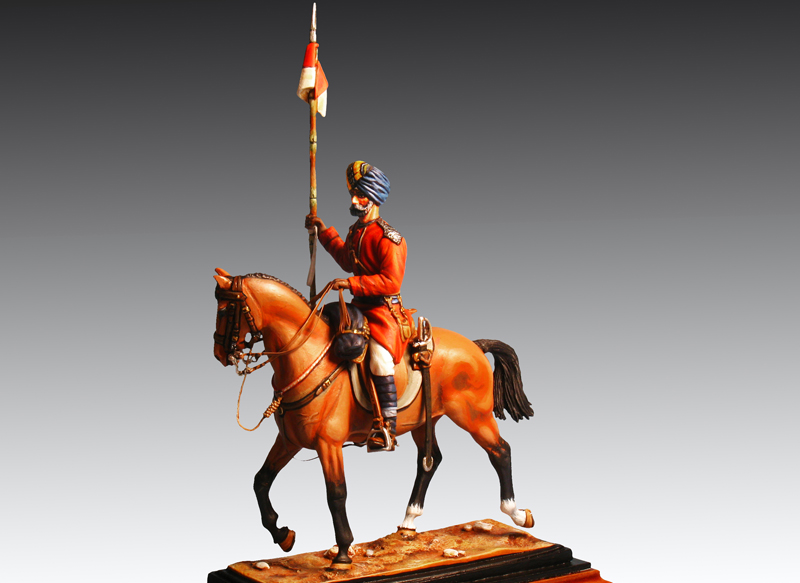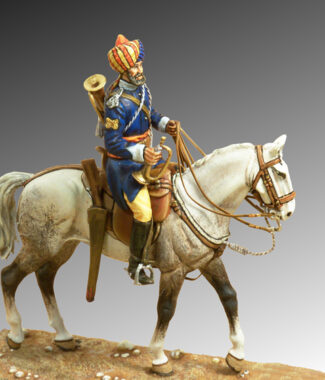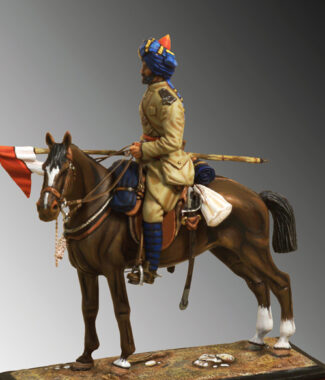After the reform of 1920, it amalgamated with the 2nd Lancers (Gardner’s Horse).
1922 (April) – 2nd/4th Cavalry.
1922 (July) – 2nd Lancers (Gardner’s Horse).
On Partition of India in 1947, the regiment was allocatted to Indian Army.
The 4th Cavalry were granted an Honorary Standard for their services in Sind in 1844. The standard bore the device of a lion passant regardant.
Battle Honours: Afghanistan 1879-80.
Composition: (1901) Ranghars, Sikhs, Jats and Hindustani Muhammadans.
In August 1914 they were mobilized as the divisional cavalry regiment of the 7th Division (Meerut), landing in France in
October 1914.
In November 1915 they left the front and headed to Marseille, however, they did not leave until the end of December. They were transferred to Mesopotamia, disembarking in January 1916. They arrived to serve in the 6th Indian Cavalry Brigade. After a year, they left Mesopotamia and returned to India at the end of 1917.
At the end of 1920, the 4th Cavalry was sent to Palestine in occupation tasks, and did not return to India until January 1922. In Mumbai, in April 1922, the merger with the 2nd Lancers took place. Gardner) to form the 2nd / 4th of Lancers. However, this title was short-lived and the new unit was renamed 2nd Lancers (Gardner Cavalry) in October 1922.
The uniform was scarlet, facings blue and lace gold. On becoming Lancers in 1900 certain changes in the uniform took place and the 1901; the alkhalak becomes a kurta, first an unusually short model, then normal length. It maintains the color red with a simple dark blue facing at the base of the neck, the opening of the front, the cuffs and the seams of the sleeves and the back. The turban was dark blue with yellow, dark blue and white stripes.
From these reforms, the British officers did not return to use Indian uniforms, except for full dress; with the exception of the Commander of the regiment that from 1908, dressed an Indian uniform with some modifications with respect to the rest of native officers.








Reviews
There are no reviews yet.